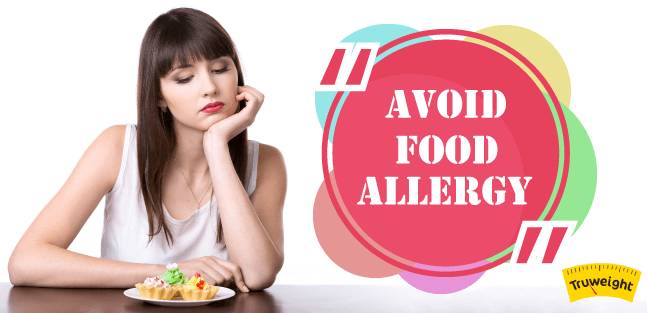food, Food & Nutrition
How To Know You Have Food Allergy And Ways To Avoid It
Medically reviewed by Shanmukha Priya, M.Phil and Ph.D. in Food Science and Nutrition
Food allergy is more common than has been noted before. There are different ways an allergen in a food might react with a person, and the levels of severity also vary from person to person.
There are many common foods that can cause very severe allergies.
Table of content
- Fact about food allergy
- Symptoms of food allergy
- Allergy-causing food
- Anaphylaxis
- Pollen-food allergy syndrome
- Gluten allergy
- The case of food allergy
What is a food allergy? Sometimes our immune system reacts soon after eating a certain kind of food.
Even a tiny amount of the allergy-causing food can trigger signs and symptoms such as digestive problems, hives or swollen airways.
In some people, a food allergy can cause severe symptoms or even a life-threatening reaction is known as anaphylaxis.
Fact about food allergy
- Food allergies are most common in young children.
- Milk, egg, wheat and soy allergies are often outgrown. But most people do not outgrow peanut, tree nut, fish and shellfish allergies.
- Food allergies affect approximately 4 to 6 per cent of children in the U.S.
- About 5.9 million (8%) of children have food allergies.
- In 2015, 4.2 million children under 18 years of age had food allergies over the previous 12 months.
- Children with food allergies are two to four times more likely to have asthma or other allergic diseases.
- Food allergies occur at a lower rate in Hispanic children at 3.6 per cent. Food allergies in non-Hispanic white and non-Hispanic black children are greater than 5 per cent.
Common symptoms of food allergy
For some people, an allergic reaction to a particular food may be uncomfortable but not severe. For other people, an allergic food reaction can be frightening and even life-threatening.
Food allergy symptoms usually develop within a few minutes to two hours after eating the offending food.
The most common food allergy signs and symptoms include:
- Tingling or itching in the mouth.
- Hives, itching or eczema.
- Swelling of the lips, face, tongue and throat or other parts of the body.
- Wheezing, nasal congestion or trouble breathing.
- Abdominal pain, diarrhoea, nausea or vomiting.
- Dizziness, lightheadedness or fainting.
8 most allergy-causing foods
The following eight foods cause 90 per cent of most food allergy reactions:
- Milk
- Egg
- Peanut
- Tree nut (e.g., almonds, walnut, pecans, cashews, pistachios)
- Wheat
- Soy
- Fish (e.g., bass, flounder, cod)
- Shellfish (e.g., crab, shrimp, scallop, clams)

What is an anaphylaxis?
It is a potentially life-threatening reaction that can impair breathing and send the body into shock; reactions may simultaneously affect different parts of the body (for example, a stomach ache accompanied by a rash).
Most food-related symptoms occur within two hours of ingestion; often they start within minutes. In some very rare cases, the reaction may be delayed by four to six hours or even longer.
Delayed reactions are most typically seen in children who develop eczema as a symptom of food allergy and in people with a rare allergy to red meat caused by the bite of a lone star tick.
What is pollen-food allergy syndrome?
Also known as oral allergy syndrome, pollen-food allergy syndrome affects many people who have hay fever. In this condition, certain fresh fruits and vegetables or nuts and spices can trigger an allergic reaction that causes the mouth to tingle or itch.
In serious cases, the reaction results in swelling of the throat or even anaphylaxis. Proteins in certain fruits, vegetables, nuts and spices cause the reaction because they are similar to allergy-causing proteins found in certain pollens.
This is an example of cross-reactivity. When you cook foods that trigger pollen-food allergy syndrome, your symptoms may be less severe.
How common is gluten allergy?
Gluten is a protein found in grains, such as wheat, barley and rye. Some people are allergic to wheat, but that is not the same as a gluten allergy.
Gluten allergy is a misleading term commonly confused with a wheat allergy, or sometimes celiac disease. There is no such thing as a gluten allergy, but there is a condition called Celiac Disease. Celiac Disease is a digestive condition that is potentially serious if not diagnosed or treated.
Symptoms of celiac disease include severe diarrhoea after eating gluten-containing products, a rash, severe weight loss or failure to properly gain weight, and abdominal pain. In small children, you may only see poor weight gain and no pain, or other symptoms.
Diagnosis of celiac disease can only be made by a board-certified gastroenterologist. It must also be made when the person is eating foods with gluten, as gluten avoidance is the active treatment.
Steps to take in Case of food allergy
There is currently no cure for food allergies, and available treatments only ease the symptoms. Thus, it leaves prevention as the only way out.
1. Preventing a food allergic reaction
There are no drugs or treatments available that prevent food allergies. If you have food allergies, the only way to avoid allergic reactions is to avoid allergenic foods.
After you and your healthcare professional have identified the food(s) to which you are sensitive, you must remove them from your diet.
2. Read food labels
Read the list of ingredients on the label of each prepared food that you are considering eating. Many allergens, such as peanuts, eggs, and milk, may appear in prepared foods you normally would not associate them with.
Since 2006, U.S. food manufacturers have been required by law to list the ingredients of prepared foods. In addition, they must use plain language to disclose whether their products contain (or may contain) any of the top eight allergenic foods – eggs, milk, peanuts, tree nuts, soy, wheat, shellfish, and fish.
QUICK BYTES
What is food allergy?
When your body reacts to any food that you have eaten by causing itchiness, breathlessness, rashes, and swellings, it is said be food allergy
Can food allergy be treated?
Yes, it can be treated with antihistamines. Also avoid eating the allergy causing foods in future.
What are the most allergy causing foods?
Shell fish, eggs, honey, milk, peanuts, wheat and soy are known to have cause very serious allergic reactions in many people.
Food allergies most times are mild but take a serious turn many a time. So it is always better to know beforehand the foods you are allergic to and Possible will help you figure out just that.
Talk to our expert Possible Nutritionist today and find the perfect way to keep food allergies at bay! The first consultation is on us.

Very important and useful content. Helpful too.
Hi! We thank you sharing your valuable feedback towards ” how to know you have food allergy and ways to avoid it”. Keep following our blog to know more health information.